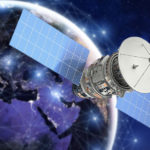Prove that the velocity potential and the stream function for a source flow, satisfy Laplace’s equation.
Prove that the velocity potential and the stream function for a source flow, satisfy Laplace’s equation.
Velocity potential and stream function for a source flow is given as \phi=\frac{\Lambda }{2\pi}ln\;r and \psi=\frac{\Lambda }{2\pi}\;\theta.
\phi=\frac{\Lambda }{2\pi}ln\;r \\\frac{\partial \phi}{\partial r}=\frac{\Lambda }{2\pi}\frac{1}{r}\;,\;\frac{\partial^2 \phi}{\partial r^2}=-\frac{\Lambda }{2\pi}\frac{1}{r^{2}} \\\frac{\partial \phi}{\partial \theta}=0\;;\;\frac{\partial^2 \phi}{\partial \theta^2}=0
Therefore Laplace equation \frac{1}{r}\frac{\partial }{\partial r}\left ( r\; \frac{\partial \phi}{\partial r} \right )+\frac{1}{r^{2}}\frac{\partial^2 \phi}{\partial \theta^2}=0+0=0
is satisfied.
\psi=\frac{\Lambda }{2\pi}\theta\frac{\partial \psi}{\partial r}=0\;;\;\frac{\partial^2 \psi}{\partial r^2}=0 \\\frac{\partial \psi}{\partial \theta}=\frac{\Lambda }{2\pi}\;;\;\frac{\partial^2 \psi}{\partial \theta^2}=0
Therefore Laplace equation \frac{1}{r}\frac{\partial }{\partial r}\left ( r\;\frac{\partial \psi}{\partial r} \right )+\frac{1}{r^{2}}\frac{\partial^2 \psi}{\partial \theta^2}=\frac{1}{r}\frac{\partial (0)}{\partial r}+\frac{1}{r^{2}}\left ( 0 \right )=0+0=0
is satisfied.



